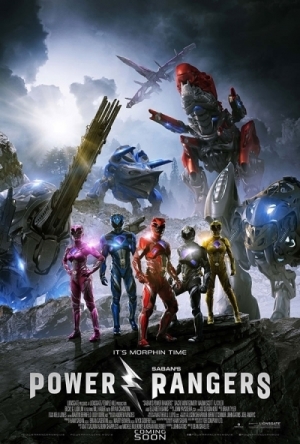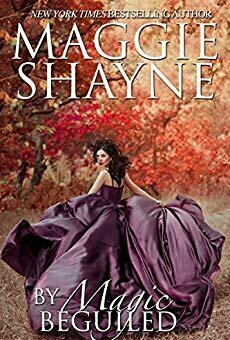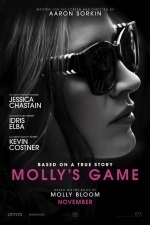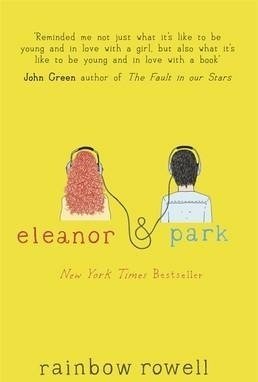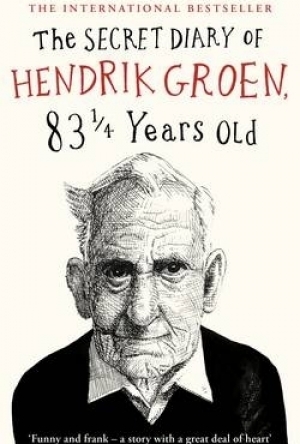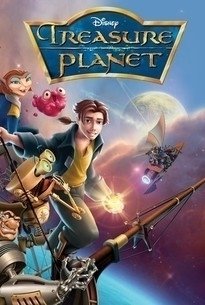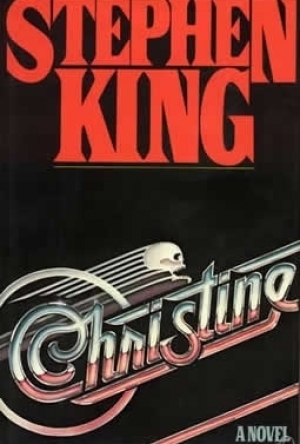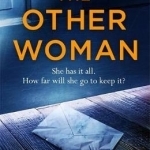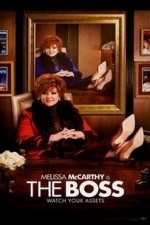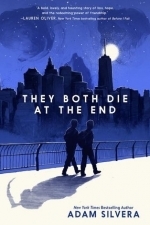Search
Search results
Gareth von Kallenbach (980 KP) rated Power Rangers (2017) in Movies
Jul 12, 2019
When I first heard that The Mighty Morphin Power Rangers would be getting a film adaptation, I was a bit apprehensive. Hollywood has had a bit of trouble converting many of the themes and issues brought up in a variety of shows into films that stay loyal to their respective franchises.
Fans on social media have often expressed their dissatisfaction with films not staying true to the origin stories or their inabil;ity to retain much of the character and charm that endeared them to their fans. Power Rangers does not suffer from this dilemma. As someone who watched the series as it first hit American markets in the 1990s, I was unsure of how this story would transfer onto the big screen.
It wasn’t something that I was too personally invested in. It was a series in which I considered myself to be a casual fan understanding the background, characters, and general direction of the show. I wasn’t prepared for what the film version offered.
This adaptation is near perfect in the way that it is able to create a modern, mature version that incorporates many aspects into weaving their story.
The basics of the film are roughly the same as the show: it is based in Angel Grove, there are five teenagers serving the role of rangers whose goal is to save the world, and all the complexities that come with being a superhero who has a “real life.”
One of the more remarkable issues related to the film is how the writers and director are able to be inclusive with their characters without being condescending to their audiences old and new. We get a glimpse of a team that is more colorful and diverse. Where the original crew showed a group of youths of different races, the film version does not stop with race as demonstrating the variety that exists within our world. The film allows for the inclusion of people on the autism spectrum, as well as, allowing for the inclusion of the LGBT community. The film shows audiences that there are people just like them or people that they know in the superhero realm. It is not limited by race, gender, sexual orientation, or cognitive development.
Power Rangers itself is a fun movie with depth. As the film continued, I tried to look for areas to pick it apart and find those pieces that really detracted from the story. The film has its faults in a simply developing storyline, but that goes with the franchise. It isn’t supposed to be complex or overbearing. The humor ranges from sophomoric to sophisticated. The film is accessible to those who are new to the franchise and those who have been watching since its inception. Additionally, it is a superhero movie it is not insulting to its audience. It demonstrates the difficulties that exist with teen life, presents real problems that they have to deal with in contrast to the fantasy that they are living out as part of this team.
The film is beautifully shot and the CGI is nearly seamless (the film is not overly reliant on it, either). The fighting and action sequences are as much a part of the story as the characters themselves. Power Rangers allows for audiences to be entertained visually and comedically. Additionally, it allows for those of us who have not watched or followed the Power Rangers in a while to be a bit nostalgic and look back to when we ourselves could not get home quickly enough for “Morphin’ Time.” The film is updated, mature, and will have fans young and old beaming with delight.
Fans on social media have often expressed their dissatisfaction with films not staying true to the origin stories or their inabil;ity to retain much of the character and charm that endeared them to their fans. Power Rangers does not suffer from this dilemma. As someone who watched the series as it first hit American markets in the 1990s, I was unsure of how this story would transfer onto the big screen.
It wasn’t something that I was too personally invested in. It was a series in which I considered myself to be a casual fan understanding the background, characters, and general direction of the show. I wasn’t prepared for what the film version offered.
This adaptation is near perfect in the way that it is able to create a modern, mature version that incorporates many aspects into weaving their story.
The basics of the film are roughly the same as the show: it is based in Angel Grove, there are five teenagers serving the role of rangers whose goal is to save the world, and all the complexities that come with being a superhero who has a “real life.”
One of the more remarkable issues related to the film is how the writers and director are able to be inclusive with their characters without being condescending to their audiences old and new. We get a glimpse of a team that is more colorful and diverse. Where the original crew showed a group of youths of different races, the film version does not stop with race as demonstrating the variety that exists within our world. The film allows for the inclusion of people on the autism spectrum, as well as, allowing for the inclusion of the LGBT community. The film shows audiences that there are people just like them or people that they know in the superhero realm. It is not limited by race, gender, sexual orientation, or cognitive development.
Power Rangers itself is a fun movie with depth. As the film continued, I tried to look for areas to pick it apart and find those pieces that really detracted from the story. The film has its faults in a simply developing storyline, but that goes with the franchise. It isn’t supposed to be complex or overbearing. The humor ranges from sophomoric to sophisticated. The film is accessible to those who are new to the franchise and those who have been watching since its inception. Additionally, it is a superhero movie it is not insulting to its audience. It demonstrates the difficulties that exist with teen life, presents real problems that they have to deal with in contrast to the fantasy that they are living out as part of this team.
The film is beautifully shot and the CGI is nearly seamless (the film is not overly reliant on it, either). The fighting and action sequences are as much a part of the story as the characters themselves. Power Rangers allows for audiences to be entertained visually and comedically. Additionally, it allows for those of us who have not watched or followed the Power Rangers in a while to be a bit nostalgic and look back to when we ourselves could not get home quickly enough for “Morphin’ Time.” The film is updated, mature, and will have fans young and old beaming with delight.
Kara Skinner (332 KP) rated By Magic Beguiled in Books
Sep 10, 2019
Many a man has died of longing for one such as her. For her skin has the flavor of honey which contains a magic all its own. Once a man’s lips taste her nectar, he is bound to her for all his days. Be forewarned, then, for her spell cannot be broken. Look for the sign of the cradle moon above the mound of Venus. Be it pale, you might yet escape with our heart and mind intact. But be it crimson, she is of royal blood, and too strong for a mortal man’s resistance.
Brigit Malone can paint anything she sees, and uses that skill to get herself and her best friend, Razor Face Malone, off the streets. Living the straight life is good until an old enemy kidnaps Raze and demands Brigit forge a privately owned painting, switch the fake for the original, and deliver it. But that painting is the prize possession of Adam Reid, a good man betrayed one too many times. Not only that, but Brigit has seen him before in her dreams. Hurting him is unbearable, but so is leaving Raze in danger.
Neither of them realize the images in the painting are actually a message from the twin sister Brigit doesn’t know she has, a message calling her back to the enchanted kingdom of Rush, where the two half fay twins are destined to put down the usurping Dark Prince Tristan and restore peace to their home, the distant land of Rush.
This book was just what I needed. It’s an epic adventure with romance, deception, and magic. Adam Reid is breath-takingly sexy, and Brigit is wonderfully strong and graceful, like a fairy should be.
However, Adam isn’t inclined to believe in love, let alone fairies. After his terrible childhood with an abusive father, his money was stolen by his ex wife, leaving him a jaded and cynical man about the world and very distrustful of humans. His sadness translates really well on the page and it’s really easy to feel for him, even when he’s complaining about only being able to afford a once-a-week cleaning service instead of a live-in maid. Despite his crankiness and need to be a cynic, you can’t help but want him to find true love and happiness.
Brigit is similarly disillusioned about life. After living homeless on the streets for several years, she succumbed to be an art forger to care for Raze, an old man who had saved her from a fire, and acted like a father to her. Now she was struggling to put the past behind her by running a florist shop. Unfortunately she will have no choice but to go back.to being an art forger to save Raze from one of her old enemies. And this means she needs to rob Adam Reid of the painting.
Adam’s first impression of Brigit is well illustrated and on point with the magic ability of fairies, especially those of royal blood.
She was incredible, and because her eyes sucked him in like quicksand, and because he had the oddest feeling that he knew her. Or should know her.
I love that this story isn’t insta-love, despite the Lure that Brigit gives off, magic that makes men fall in love with her. Yes, Adam does obsess with her a bit at first, but there is so much distrust in him that he doesn’t fall to her charms too quickly. And the plot is fantastic, right up to the heart-wrenching climax. Even though there’s very little magic and supernatural elements in the first book of this duo, it’s still there. Adult fantasy and fairytale lovers will enjoy this book as much as I did.
Brigit Malone can paint anything she sees, and uses that skill to get herself and her best friend, Razor Face Malone, off the streets. Living the straight life is good until an old enemy kidnaps Raze and demands Brigit forge a privately owned painting, switch the fake for the original, and deliver it. But that painting is the prize possession of Adam Reid, a good man betrayed one too many times. Not only that, but Brigit has seen him before in her dreams. Hurting him is unbearable, but so is leaving Raze in danger.
Neither of them realize the images in the painting are actually a message from the twin sister Brigit doesn’t know she has, a message calling her back to the enchanted kingdom of Rush, where the two half fay twins are destined to put down the usurping Dark Prince Tristan and restore peace to their home, the distant land of Rush.
This book was just what I needed. It’s an epic adventure with romance, deception, and magic. Adam Reid is breath-takingly sexy, and Brigit is wonderfully strong and graceful, like a fairy should be.
However, Adam isn’t inclined to believe in love, let alone fairies. After his terrible childhood with an abusive father, his money was stolen by his ex wife, leaving him a jaded and cynical man about the world and very distrustful of humans. His sadness translates really well on the page and it’s really easy to feel for him, even when he’s complaining about only being able to afford a once-a-week cleaning service instead of a live-in maid. Despite his crankiness and need to be a cynic, you can’t help but want him to find true love and happiness.
Brigit is similarly disillusioned about life. After living homeless on the streets for several years, she succumbed to be an art forger to care for Raze, an old man who had saved her from a fire, and acted like a father to her. Now she was struggling to put the past behind her by running a florist shop. Unfortunately she will have no choice but to go back.to being an art forger to save Raze from one of her old enemies. And this means she needs to rob Adam Reid of the painting.
Adam’s first impression of Brigit is well illustrated and on point with the magic ability of fairies, especially those of royal blood.
She was incredible, and because her eyes sucked him in like quicksand, and because he had the oddest feeling that he knew her. Or should know her.
I love that this story isn’t insta-love, despite the Lure that Brigit gives off, magic that makes men fall in love with her. Yes, Adam does obsess with her a bit at first, but there is so much distrust in him that he doesn’t fall to her charms too quickly. And the plot is fantastic, right up to the heart-wrenching climax. Even though there’s very little magic and supernatural elements in the first book of this duo, it’s still there. Adult fantasy and fairytale lovers will enjoy this book as much as I did.
Bob Mann (459 KP) rated Molly's Game (2017) in Movies
Sep 29, 2021
Wordy but entertaining.
You can never accuse Aaron Sorkin of skimping on his words. Sorkin is of course the award-winning writer of “The West Wing” but on the big screen he has also written many classics: “A Few Good Men”; “The Social Network” and “Steve Jobs” for example. Here he also makes his directorial debut in a movie about the true-life turbulent career of Olympic wannabe skier Molly Bloom.
Bloom is played by Jessica Chastain, from films such as “Zero Dark Thirty” and “Miss Sloane” (one of my films of the year last year). Chastain’s roles as an actress are often quite cold and calculating, as suits her demeanour. As such her characters are not often easy to warm to in movies (and as such, my wife is not a fan).
Taking the piste. Molly in her younger ski-centric role.
Here as Molly Bloom she is as equally driven as in “Miss Sloane“, but the drive is learned from her father (Kevin Costner), bullying her to be the best she can be at skiing in a highly competitive family. Forced out of the skiing business (for reasons I won’t spoil), she takes a “gap year” from law school that turns into a “gap life” after she falls into the slightly shady business of running poker nights for LA’s rich elite. It’s here that Chastain’s Bloom is able to show a gentler and more compassionate side, trying to talk some of her clients (who invariably fall in love with her) off the ledge of their gambling addiction.
Chris O’Dowd as one of the punter’s in deep.
Sorkin’s script (based on Molly’s own autobiography, I should add) does a really nice job of cutting backwards and forwards through Molly’s timeline to drill into motivations and her mental state, and in doing so he pulls out an award-winning (or at least Golden-Globe award-nominating) performance from Chastain in the process. Also very effective though is Kevin Costner (“Hidden Figures“, “Man of Steel“), who is quietly building an impressive portfolio of supporting actor roles. Here he rather dials in his “tough and aloof guy” performance until the park bench scene (below) where he surprises in a good way.
Benches with wolves. Kevin Costner impressive as Molly’s hard-line father.
It’s also a blessed relief to find a decent vehicle to showcase the undoubted talents of Britain’s Idris Elba – an actor who has been woefully served by rubbish such as “Bastille Day“, rather lame sequels like “Star Trek: Beyond” or minor roles such as in “Thor: Ragnarok“. Here he can really get his teeth into the role of Molly’s lawyer, with a multi-layered character that reveals a little – but not too much of – his back-story to leave you with intriguing questions.
An indecisive Charlie Jaffey (Idris Elba) can make his mind up about Molly (Jessica Chastain).
So it’s a good film, but an intelligent watch that mandates your attention. The script is sufficiently dense and wordy that it requires significant concentration: this is not a “park your brain at the door” type of ‘Michael Bay film’. (As such, while it remains a recommended watch, I’m not sure it would be one that would necessarily make my DVD list for repeat watchings).
Michael Cera (centre) as the mysterious but powerful “Player X”; a Hollywood actor, but who is he supposed to be? (Answers on a postcard!).
But again, I must comment on what an amazing year this is turning out to be for women in film. Less #Me-too and more #She-do! Once again, here is a movie where a confident woman is firmly in the driving seat, and while powerful men try to bring her down, it is not them that succeeds. (The studio bill for talent in the past year must be a LOT less than it was the year before! #don’tshootme #topicalhumour #CarrieGracey). #TimesUp.
Bloom is played by Jessica Chastain, from films such as “Zero Dark Thirty” and “Miss Sloane” (one of my films of the year last year). Chastain’s roles as an actress are often quite cold and calculating, as suits her demeanour. As such her characters are not often easy to warm to in movies (and as such, my wife is not a fan).
Taking the piste. Molly in her younger ski-centric role.
Here as Molly Bloom she is as equally driven as in “Miss Sloane“, but the drive is learned from her father (Kevin Costner), bullying her to be the best she can be at skiing in a highly competitive family. Forced out of the skiing business (for reasons I won’t spoil), she takes a “gap year” from law school that turns into a “gap life” after she falls into the slightly shady business of running poker nights for LA’s rich elite. It’s here that Chastain’s Bloom is able to show a gentler and more compassionate side, trying to talk some of her clients (who invariably fall in love with her) off the ledge of their gambling addiction.
Chris O’Dowd as one of the punter’s in deep.
Sorkin’s script (based on Molly’s own autobiography, I should add) does a really nice job of cutting backwards and forwards through Molly’s timeline to drill into motivations and her mental state, and in doing so he pulls out an award-winning (or at least Golden-Globe award-nominating) performance from Chastain in the process. Also very effective though is Kevin Costner (“Hidden Figures“, “Man of Steel“), who is quietly building an impressive portfolio of supporting actor roles. Here he rather dials in his “tough and aloof guy” performance until the park bench scene (below) where he surprises in a good way.
Benches with wolves. Kevin Costner impressive as Molly’s hard-line father.
It’s also a blessed relief to find a decent vehicle to showcase the undoubted talents of Britain’s Idris Elba – an actor who has been woefully served by rubbish such as “Bastille Day“, rather lame sequels like “Star Trek: Beyond” or minor roles such as in “Thor: Ragnarok“. Here he can really get his teeth into the role of Molly’s lawyer, with a multi-layered character that reveals a little – but not too much of – his back-story to leave you with intriguing questions.
An indecisive Charlie Jaffey (Idris Elba) can make his mind up about Molly (Jessica Chastain).
So it’s a good film, but an intelligent watch that mandates your attention. The script is sufficiently dense and wordy that it requires significant concentration: this is not a “park your brain at the door” type of ‘Michael Bay film’. (As such, while it remains a recommended watch, I’m not sure it would be one that would necessarily make my DVD list for repeat watchings).
Michael Cera (centre) as the mysterious but powerful “Player X”; a Hollywood actor, but who is he supposed to be? (Answers on a postcard!).
But again, I must comment on what an amazing year this is turning out to be for women in film. Less #Me-too and more #She-do! Once again, here is a movie where a confident woman is firmly in the driving seat, and while powerful men try to bring her down, it is not them that succeeds. (The studio bill for talent in the past year must be a LOT less than it was the year before! #don’tshootme #topicalhumour #CarrieGracey). #TimesUp.
Kaysee Hood (83 KP) rated Eleanor & Park in Books
Oct 3, 2017
A love story that is not a love story, but is a love story with lessons sometimes everything falls into place as you want it and yet can somehow.
The most confusing sentence I will ever form about book. I loved Fangirl, so it was no trouble picking this up the next time I went to Barnes & Noble. Everyone told me how much they loved this book while I was reading Fangirl and though it has sat in the stack of books for months waiting for me to pick it up yesterday felt like the day to start.
I could not put it down.
Eleanor is not perfect. She is not skinny as a twig, instead the beautiful thickness of the oak itself. She has hair the brightest red you could ever think of that curls at every chance on top of each other and freckles to match on the pale skin. If that was not enough she dresses in such a manner that demands to make her be noticed if you somehow looked over her curly mop. In short, Eleanor is not your typical girl in books. I've realized I've said this before. I really truly mean it as I do each time. Eleanor is not the heroine who discovers powers. Eleanor does not magically win anyone over because she suddenly alters changeable things about herself. No, she remains true to herself through the story. She is hardly ever able to accept the good since she has only known awful.
Awful tends to weed back into her life, no matter how much Park could pluck it away for a short time.
Park is one of those people who is there, yet is not there. He is not popular, but he is not unpopular. He skims by with little to no effort. If it was not for his father being a Vet, if it was not for his family always living in town since before it was a town, then Park may not have had it so easy. He would have gotten more crap about being 5'4" and slender. He would have gotten beat up for being half Korean. Not a lot happened to Park. Girls were few. Millstones were slim. Everything was this nice norm where he had little worries. His biggest worry was learning stick. Until he sees Eleanor because then it becomes an uphill battle worrying if he will keep is so-so status or not all with Eleanor suddenly being dropped his lap. He’s never felt much of anything. Never felt good enough. Never felt bliss. Never felt it all made sense. She changed that, even if she frustrated him to no end with how she talked and acted. It all changed. Though even he remained the same.
The most confusing sentence I will ever form about book. I loved Fangirl, so it was no trouble picking this up the next time I went to Barnes & Noble. Everyone told me how much they loved this book while I was reading Fangirl and though it has sat in the stack of books for months waiting for me to pick it up yesterday felt like the day to start.
I could not put it down.
Eleanor is not perfect. She is not skinny as a twig, instead the beautiful thickness of the oak itself. She has hair the brightest red you could ever think of that curls at every chance on top of each other and freckles to match on the pale skin. If that was not enough she dresses in such a manner that demands to make her be noticed if you somehow looked over her curly mop. In short, Eleanor is not your typical girl in books. I've realized I've said this before. I really truly mean it as I do each time. Eleanor is not the heroine who discovers powers. Eleanor does not magically win anyone over because she suddenly alters changeable things about herself. No, she remains true to herself through the story. She is hardly ever able to accept the good since she has only known awful.
Awful tends to weed back into her life, no matter how much Park could pluck it away for a short time.
Park is one of those people who is there, yet is not there. He is not popular, but he is not unpopular. He skims by with little to no effort. If it was not for his father being a Vet, if it was not for his family always living in town since before it was a town, then Park may not have had it so easy. He would have gotten more crap about being 5'4" and slender. He would have gotten beat up for being half Korean. Not a lot happened to Park. Girls were few. Millstones were slim. Everything was this nice norm where he had little worries. His biggest worry was learning stick. Until he sees Eleanor because then it becomes an uphill battle worrying if he will keep is so-so status or not all with Eleanor suddenly being dropped his lap. He’s never felt much of anything. Never felt good enough. Never felt bliss. Never felt it all made sense. She changed that, even if she frustrated him to no end with how she talked and acted. It all changed. Though even he remained the same.
Hazel (1853 KP) rated The Secret Diary of Hendrik Groen, 83 Years Old in Books
May 25, 2017
Hilariously Honest
This ARC was provided by the publisher via NetGalley in exchange for an honest review
Think Adrian Plass but with octogenarians and this is the result. The Secret Diary of Hendrik Groen, 83 ¼ Years Old is a years long journal beginning on 1st January 2013. Hendrik hates old people, an unfortunate predicament as he live in a home for the elderly. He set himself the task of writing a daily account about the “life of the inmates of a care home in North Amsterdam,” with the purpose of it being read after his death by readers, or “inmates” who wish to know what to expect in their old age.
Whether the contents of this diary are true or exaggerated does not matter, as what it produces is a laugh-out-loud story, a pleasure to read. From cake in the fish tank, to complaints about leaky nether regions, Hendrik provides a brutally honest account of the highs and lows of being an OAP.
The Secret Diary of Hendrik Groen, 83 ¼ Years Old encompasses a selection of unique and presumably real characters. Readers are bound to discover someone who reminds them of an elderly relative, or even themselves! There is the diabetic, rude, gin loving Evert – Henrdik’s best friend of many years – who is never without a witty comeback for the bossy, self-important director of the home. On the other hand, levelheaded Eefje, who Hendrik is rather fond of, shows a completely different view of elderly mentality. Despite the stereotypes associated with care home patients, Hendrik and friends still have as much fun as possible; after all, they may be Old but not Dead.
Speaking of dead, Hendrik makes a number of jokes and references to euthanasia, which may seem like poor taste to some readers. However, when all the friends around you are literally living the final years of their lives, why not joke about it instead of worry? Naturally there are sad diary entries about the inevitable deaths of his contemporaries throughout the year, but Hendrik does not let it get him down for long. Hendrik and his close friends make the most of the time they have left, and if that involves speeding along the roads of Amsterdam on their souped-up mobility scooters, then that is exactly what they will do.
The Secret Diary of Hendrik Groen, 83 ¼ Years Old is a gem of a book and comes highly recommended to readers of all ages. Hendrik ‘s effortlessly funny, sarcastic remarks stress what the average citizen is too polite to voice. Once you begin it is hard to put down. Unfortunately a year is not long enough and you will end up wanting more. Whatever the future holds for us, let’s hope we become someone like Hendrik Groen.
Think Adrian Plass but with octogenarians and this is the result. The Secret Diary of Hendrik Groen, 83 ¼ Years Old is a years long journal beginning on 1st January 2013. Hendrik hates old people, an unfortunate predicament as he live in a home for the elderly. He set himself the task of writing a daily account about the “life of the inmates of a care home in North Amsterdam,” with the purpose of it being read after his death by readers, or “inmates” who wish to know what to expect in their old age.
Whether the contents of this diary are true or exaggerated does not matter, as what it produces is a laugh-out-loud story, a pleasure to read. From cake in the fish tank, to complaints about leaky nether regions, Hendrik provides a brutally honest account of the highs and lows of being an OAP.
The Secret Diary of Hendrik Groen, 83 ¼ Years Old encompasses a selection of unique and presumably real characters. Readers are bound to discover someone who reminds them of an elderly relative, or even themselves! There is the diabetic, rude, gin loving Evert – Henrdik’s best friend of many years – who is never without a witty comeback for the bossy, self-important director of the home. On the other hand, levelheaded Eefje, who Hendrik is rather fond of, shows a completely different view of elderly mentality. Despite the stereotypes associated with care home patients, Hendrik and friends still have as much fun as possible; after all, they may be Old but not Dead.
Speaking of dead, Hendrik makes a number of jokes and references to euthanasia, which may seem like poor taste to some readers. However, when all the friends around you are literally living the final years of their lives, why not joke about it instead of worry? Naturally there are sad diary entries about the inevitable deaths of his contemporaries throughout the year, but Hendrik does not let it get him down for long. Hendrik and his close friends make the most of the time they have left, and if that involves speeding along the roads of Amsterdam on their souped-up mobility scooters, then that is exactly what they will do.
The Secret Diary of Hendrik Groen, 83 ¼ Years Old is a gem of a book and comes highly recommended to readers of all ages. Hendrik ‘s effortlessly funny, sarcastic remarks stress what the average citizen is too polite to voice. Once you begin it is hard to put down. Unfortunately a year is not long enough and you will end up wanting more. Whatever the future holds for us, let’s hope we become someone like Hendrik Groen.
Connor Sheffield (293 KP) rated Treasure Planet (2002) in Movies
Jun 6, 2017
A fun take on the classic Treasure Island tale (1 more)
A very gripping story with a lot of heart
(Personal opinion) I'm not a huge fan of 'space' pirates (1 more)
Predictable even without knowing the story
A fun film for the family
This is probably only the 3rd time I've seen this film in my life. I'm currently reading the classic novel 'Treasure Island' written by Robert Louis Stevenson, and I wanted to watch something similar to it, without watching the actual adaptations of the same name as I do not wish to spoil the events of the few chapters I have not yet read. I knew that Treasure Planet was different in many ways and so I knew it wouldn't be completely true to the story.
So, I would describe Treasure Planet to someone by saying "Think of space pirates, all of whom are different weird looking species of aliens, and a cyborg with one young human looking character who's a stereotypical rebellious teen, even including a history of trespassing with his hover board (referencing a skateboarding rebellious teen).
The film has a lot of connections to the source material with it's story, such as names, and roles within the story, but it has a lot of it's own to offer. As a Disney film you expect certain aspects with the story, and you know what's going to happen moments before it happens, which might take away some of the entertainment factor for some, but if you don't mind it, then it's a decent film. Adapting the classic tale and setting it in space, gives the writers a lot of freedom to make the characters look and act how they want. There's a spider like character, a cat humanoid, a dog humanoid, frog humanoids, a character who appears to be made of stone, and John Silver himself, known in the story for having one leg, actually has robotic replacements for his left side. He has a robotic leg, arm and eye, which add to his somewhat villainous appearance and attitude.
The voice cast for the film is good and each character certainly seems to sound how they look, and when there are the heart filled moments as there are in every Disney film, it really hits you and makes you sympathize with the characters.
Overall this would be a fun film to watch with the kids, and if you grew up with Disney, as I'm sure most people have, but you haven't seen this, I recommend at least giving it a chance. If you don't like it, it's understandable, but it is a fun take on Treasure Island, and the pirate theme as a whole.
So, I would describe Treasure Planet to someone by saying "Think of space pirates, all of whom are different weird looking species of aliens, and a cyborg with one young human looking character who's a stereotypical rebellious teen, even including a history of trespassing with his hover board (referencing a skateboarding rebellious teen).
The film has a lot of connections to the source material with it's story, such as names, and roles within the story, but it has a lot of it's own to offer. As a Disney film you expect certain aspects with the story, and you know what's going to happen moments before it happens, which might take away some of the entertainment factor for some, but if you don't mind it, then it's a decent film. Adapting the classic tale and setting it in space, gives the writers a lot of freedom to make the characters look and act how they want. There's a spider like character, a cat humanoid, a dog humanoid, frog humanoids, a character who appears to be made of stone, and John Silver himself, known in the story for having one leg, actually has robotic replacements for his left side. He has a robotic leg, arm and eye, which add to his somewhat villainous appearance and attitude.
The voice cast for the film is good and each character certainly seems to sound how they look, and when there are the heart filled moments as there are in every Disney film, it really hits you and makes you sympathize with the characters.
Overall this would be a fun film to watch with the kids, and if you grew up with Disney, as I'm sure most people have, but you haven't seen this, I recommend at least giving it a chance. If you don't like it, it's understandable, but it is a fun take on Treasure Island, and the pirate theme as a whole.
TheBookMother (105 KP) rated Christine in Books
May 26, 2019
Think classic slasher come Top Gear.
Contains spoilers, click to show
Like alot of my recent reads I picked up a very well loved copy from a supermarket fundraising bookcase.
Now, I do feel quite conflicted in critiquing the master that is Stephen King especially as it's not all positive. It's probably the same feeling if you kicked your Nan or when you've hidden your son's favourite toy that drives you crazy and watch him scour the house for it for days on end.
It started off in true King fashion. I've read a few of his repertoire including the classics. I have come to recognise his tone and the way he sets the scene.
We begin by meeting Dennis who is recalling past events which include his friend Arnie and his obsession with his new car Christine. We soon find out Christine is a bit more than your average first car and anyone who seems to cross Arnie will feel her very gory and murderous wrath. We learn that her previous owner LeBay begins to possess Arnie. Dennis sets out to try and save his friend from the evil clutch(es) (I had to sorry!) of Christine and stop her once and for all.
Tense, descriptive with an air of paranormal/ supernatural you generally know what you're getting with King and you know there will tend to be a twist or scare along the way.
However, I did find this abit of a slow burner and not what expected it to be.
I think it could be because this is 20+ years old and I am probably desensitised by slashers it did feel quite cliché in places.
I did at times feel slightly confused as we were introduced to Christine the possessed car but then we learn it's all to do with Lebay taking over and even ageing Arnie. It did remind me abit of Ghost Rider.
I enjoyed the music lyrics at the beginning of each chapter and throughout as it really did help set scene and help with showing the difference between Arnie and Lebay's ages.
I have to admit I was distracted alot and do put it down frequently but I did pick up and finish it eventually.
I normally finish a book in 2-3 days (children, work and life permitting!) But this took a while longer. Perhaps, as I felt it was a tad stagnant in places.
It was never the less an okay read, it's a good slasher come supernatural story but one I did think I would have enjoyed alot more.
Now, I do feel quite conflicted in critiquing the master that is Stephen King especially as it's not all positive. It's probably the same feeling if you kicked your Nan or when you've hidden your son's favourite toy that drives you crazy and watch him scour the house for it for days on end.
It started off in true King fashion. I've read a few of his repertoire including the classics. I have come to recognise his tone and the way he sets the scene.
We begin by meeting Dennis who is recalling past events which include his friend Arnie and his obsession with his new car Christine. We soon find out Christine is a bit more than your average first car and anyone who seems to cross Arnie will feel her very gory and murderous wrath. We learn that her previous owner LeBay begins to possess Arnie. Dennis sets out to try and save his friend from the evil clutch(es) (I had to sorry!) of Christine and stop her once and for all.
Tense, descriptive with an air of paranormal/ supernatural you generally know what you're getting with King and you know there will tend to be a twist or scare along the way.
However, I did find this abit of a slow burner and not what expected it to be.
I think it could be because this is 20+ years old and I am probably desensitised by slashers it did feel quite cliché in places.
I did at times feel slightly confused as we were introduced to Christine the possessed car but then we learn it's all to do with Lebay taking over and even ageing Arnie. It did remind me abit of Ghost Rider.
I enjoyed the music lyrics at the beginning of each chapter and throughout as it really did help set scene and help with showing the difference between Arnie and Lebay's ages.
I have to admit I was distracted alot and do put it down frequently but I did pick up and finish it eventually.
I normally finish a book in 2-3 days (children, work and life permitting!) But this took a while longer. Perhaps, as I felt it was a tad stagnant in places.
It was never the less an okay read, it's a good slasher come supernatural story but one I did think I would have enjoyed alot more.
Sassy Brit (97 KP) rated The Other Woman in Books
Jun 5, 2019
When Sophie discovers her husband is having an affair, she sets out to tackle the problem head on and confront his mistress face-to-face, in her own home, so his mistress can see her happy idyllic home life with their teenage children for herself, and perhaps back off. But they get into a tussle and the mistress accidentally gets killed, from then on one disaster after another happens to poor Sophie who is just trying to get rid of the body, but with such a busy household she ends up hiding the dead mistress in the freezer until she has more time to dispose of it. This idea had me thinking of that Fawlty Towers episode where a man dies in his hotel room and Basil ends up hiding him in the laundry basket, instead of doing the sensible, normal thing and owning up.
Although I did read this very fast and strangely have to admit I also thoroughly enjoyed this story, I did have a chuckle at quite a few of the things that happened. The nosy neighbour seemed to be constantly following Sophie around as if she had nothing better to do. The housekeeper who spotted everything going on! The twist at the end (featuring the truth about the mistress and what was really going on with the husband), was totally unexpected, and possibly pulled out of a hat to surprise us. Then the final wrap up session kind of happened far too easily for my liking. It was also a tad unbelievable, too. But hey, the way I looked at it was the husband needed to repent and unleash some of this guilt, and maybe even needed to prove his love for Sophie. Whilst Sophie (it turns out) was most certainly not a woman to be messed with, even though I doubted she realised it at the time until these disasters kept happening to her.
Overall, I did enjoy how fast I read this book, and how it kept me on tenterhooks whipping through the pages eager to get to the end to find out how they were going to round this off without getting caught. Seriously, Sophie was just trying to dispose of a body, and yet everything that could go wrong for her, did go wrong and I was constantly wondering just how was she going to get out of this mess! I also loved the ‘mysterious’ ending, which kind of made everything Sophie tried to avoid, come true and all her past efforts just a waste of time… comeuppance? Karma can be a bitch, even if the whole thing was just one big mistake. Worth a read if you don’t take it too seriously.
Although I did read this very fast and strangely have to admit I also thoroughly enjoyed this story, I did have a chuckle at quite a few of the things that happened. The nosy neighbour seemed to be constantly following Sophie around as if she had nothing better to do. The housekeeper who spotted everything going on! The twist at the end (featuring the truth about the mistress and what was really going on with the husband), was totally unexpected, and possibly pulled out of a hat to surprise us. Then the final wrap up session kind of happened far too easily for my liking. It was also a tad unbelievable, too. But hey, the way I looked at it was the husband needed to repent and unleash some of this guilt, and maybe even needed to prove his love for Sophie. Whilst Sophie (it turns out) was most certainly not a woman to be messed with, even though I doubted she realised it at the time until these disasters kept happening to her.
Overall, I did enjoy how fast I read this book, and how it kept me on tenterhooks whipping through the pages eager to get to the end to find out how they were going to round this off without getting caught. Seriously, Sophie was just trying to dispose of a body, and yet everything that could go wrong for her, did go wrong and I was constantly wondering just how was she going to get out of this mess! I also loved the ‘mysterious’ ending, which kind of made everything Sophie tried to avoid, come true and all her past efforts just a waste of time… comeuppance? Karma can be a bitch, even if the whole thing was just one big mistake. Worth a read if you don’t take it too seriously.
Movie Metropolis (309 KP) rated The Boss (2016) in Movies
Jun 11, 2019
Where's the comedy?
Melissa McCarthy is one of the biggest stars in Hollywood. Her rise to fame has been nothing short of extraordinary, helped in part by her leading roles in The Heat, Spy and of course the hilarious Bridesmaids.
However, each of those examples of comedic brilliance had one thing in common, apart from McCarthy, director Paul Feig. He brings out the very best in the actress and we’ll see if this formula continues to work with the controversial Ghostbusters reboot, released later this year.
For now, McCarthy teams up with director and real-life husband Ben Falcone (Tammy) in The Boss. But does it offer you a laugh a minute?
The Boss follows the fall from grace of Michelle Darnell (McCarthy), one of America’s wealthiest women, and her efforts to get back on top. Her plan? To start a cake-making empire. Alongside her for the ride is long-suffering assistant Claire (Kristen Bell). Side roles are reserved for Game of Thrones star Peter Dinklage as Michelle’s rival and Kathy Bates as her mentor.
Unfortunately, the biggest problem The Boss has is one that blights many films nowadays; the best bits have already been shown in the trailer. For an action adventure, this is disappointing, but for a comedy, it’s silver-screen suicide. Having laughed in the pre-release clips already, the rest of the film is as barren as the Sahara when it comes to raising a titter.
That’s a real shame as the film’s plot, whilst hardly ground-breaking, is fundamentally solid and the acting is, Dinklage’s hammy performance aside, decent. McCarthy in particular takes a poor script and injects some much-needed spice into it – a testament to her incredible talents as a comedienne. Bell is on-point and bounces off McCarthy’s presence very well while Kathy Bates provides the film with one of its more memorable scenes, albeit one already used in the trailer.
There’s also a well-choreographed bust-up between two groups of teenage girls that manages to raise a chuckle, but again the majority of it was added to the most recent trailer.
Overall, The Boss is McCarthy’s second true turkey with Tammy being the first, but there’s no blame to be placed on her shoulders here. Michelle Darnell is a cracking character, despite her striking resemblance to Rita from Coronation Street, and is one that deserves far better than a film that’s light on laughs and has to rest on the laurels of its lead star – now that’s just lazy.
Perhaps the next time her husband asks her to star in one of his comedies, she should really, really think about it first.
https://moviemetropolis.net/2016/06/11/wheres-the-comedy-the-boss-review/
However, each of those examples of comedic brilliance had one thing in common, apart from McCarthy, director Paul Feig. He brings out the very best in the actress and we’ll see if this formula continues to work with the controversial Ghostbusters reboot, released later this year.
For now, McCarthy teams up with director and real-life husband Ben Falcone (Tammy) in The Boss. But does it offer you a laugh a minute?
The Boss follows the fall from grace of Michelle Darnell (McCarthy), one of America’s wealthiest women, and her efforts to get back on top. Her plan? To start a cake-making empire. Alongside her for the ride is long-suffering assistant Claire (Kristen Bell). Side roles are reserved for Game of Thrones star Peter Dinklage as Michelle’s rival and Kathy Bates as her mentor.
Unfortunately, the biggest problem The Boss has is one that blights many films nowadays; the best bits have already been shown in the trailer. For an action adventure, this is disappointing, but for a comedy, it’s silver-screen suicide. Having laughed in the pre-release clips already, the rest of the film is as barren as the Sahara when it comes to raising a titter.
That’s a real shame as the film’s plot, whilst hardly ground-breaking, is fundamentally solid and the acting is, Dinklage’s hammy performance aside, decent. McCarthy in particular takes a poor script and injects some much-needed spice into it – a testament to her incredible talents as a comedienne. Bell is on-point and bounces off McCarthy’s presence very well while Kathy Bates provides the film with one of its more memorable scenes, albeit one already used in the trailer.
There’s also a well-choreographed bust-up between two groups of teenage girls that manages to raise a chuckle, but again the majority of it was added to the most recent trailer.
Overall, The Boss is McCarthy’s second true turkey with Tammy being the first, but there’s no blame to be placed on her shoulders here. Michelle Darnell is a cracking character, despite her striking resemblance to Rita from Coronation Street, and is one that deserves far better than a film that’s light on laughs and has to rest on the laurels of its lead star – now that’s just lazy.
Perhaps the next time her husband asks her to star in one of his comedies, she should really, really think about it first.
https://moviemetropolis.net/2016/06/11/wheres-the-comedy-the-boss-review/
Kyera (8 KP) rated They Both Die At The End in Books
Jan 31, 2018
They Both Die at the End. That tells you exactly what is going to happen in the book, yet you hope the entire time that it won't be true. This book made me so happy and sad. The journey was hopeful despite the dark theme and you really connect with the characters. This was my first Adam Silvera novel and I am definitely interested in reading more of his books now.
I also listened to the audiobook for this, rather than physically reading it. I really enjoyed the two narrators who voiced the main characters, Mateo and Rufus. Both Silvera's words and the narrator's execution made the characters come to life. My one negative for the narration was the women who voiced the supporting characters when the chapters switched to their points of view.
I would have been happy with the story being told from just Mateo and Rufus' points of view. Some of the alternative viewpoints added an interesting note to the story or helped weave seemingly unrelated events and lives together, but I didn't feel that they were all relevant and occasionally took me out of the story.
I felt that the two main characters were very well fleshed out and seemed like teenage boys living out their last day. Mateo's anxiety was unique and nicely represented. I also loved that this was an own voices novel, so there was diversity and representation. The novel completely revolves around these two and it's perfect that way. I also feel that Silvera's side characters were decently developed, you could see that they were each unique people but they weren't so detailed that they took away from Mateo and Rufus' stories.
Honestly, even though you know what's coming the book manages to keep you completely emotionally engaged and on your toes. Right in the beginning of the book one of Rufus' friends starts to cry because he didn't get to hug his best friend. It was so sad, so soon and we hadn't even experienced hundreds of pages of development and heart-string tugging yet. I knew right then that I was in for a book that would have an affect.
I am not entirely sure how I feel about the world-building. The contemporary aspects of it were fantastic and I could completely see each place that the two visited. It was the Death-Cast aspect of it that felt a little flimsy to me. I think that part of the story is the mystery of it, but I do wish we learned more. It one of the few things that I felt could be improved in this book.
I really enjoyed this read and would highly recommend it if you like character-driven novels and don't mind a good cry at the end..
I also listened to the audiobook for this, rather than physically reading it. I really enjoyed the two narrators who voiced the main characters, Mateo and Rufus. Both Silvera's words and the narrator's execution made the characters come to life. My one negative for the narration was the women who voiced the supporting characters when the chapters switched to their points of view.
I would have been happy with the story being told from just Mateo and Rufus' points of view. Some of the alternative viewpoints added an interesting note to the story or helped weave seemingly unrelated events and lives together, but I didn't feel that they were all relevant and occasionally took me out of the story.
I felt that the two main characters were very well fleshed out and seemed like teenage boys living out their last day. Mateo's anxiety was unique and nicely represented. I also loved that this was an own voices novel, so there was diversity and representation. The novel completely revolves around these two and it's perfect that way. I also feel that Silvera's side characters were decently developed, you could see that they were each unique people but they weren't so detailed that they took away from Mateo and Rufus' stories.
Honestly, even though you know what's coming the book manages to keep you completely emotionally engaged and on your toes. Right in the beginning of the book one of Rufus' friends starts to cry because he didn't get to hug his best friend. It was so sad, so soon and we hadn't even experienced hundreds of pages of development and heart-string tugging yet. I knew right then that I was in for a book that would have an affect.
I am not entirely sure how I feel about the world-building. The contemporary aspects of it were fantastic and I could completely see each place that the two visited. It was the Death-Cast aspect of it that felt a little flimsy to me. I think that part of the story is the mystery of it, but I do wish we learned more. It one of the few things that I felt could be improved in this book.
I really enjoyed this read and would highly recommend it if you like character-driven novels and don't mind a good cry at the end..
